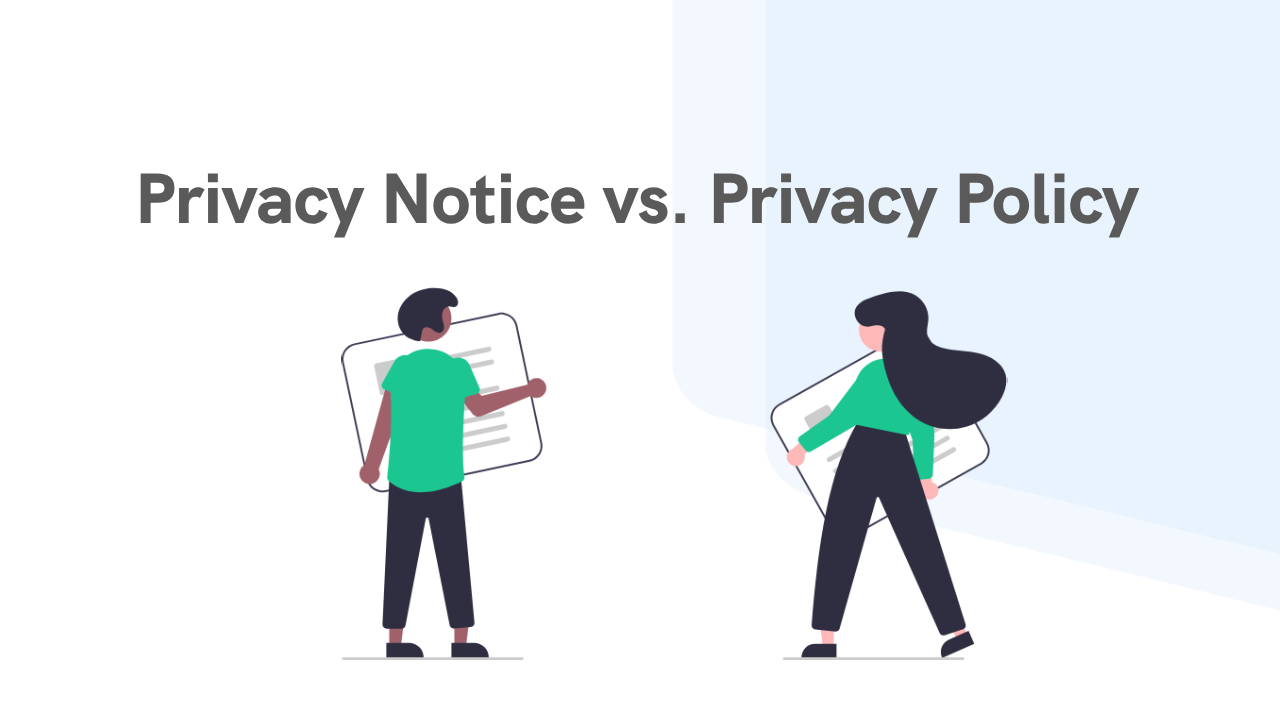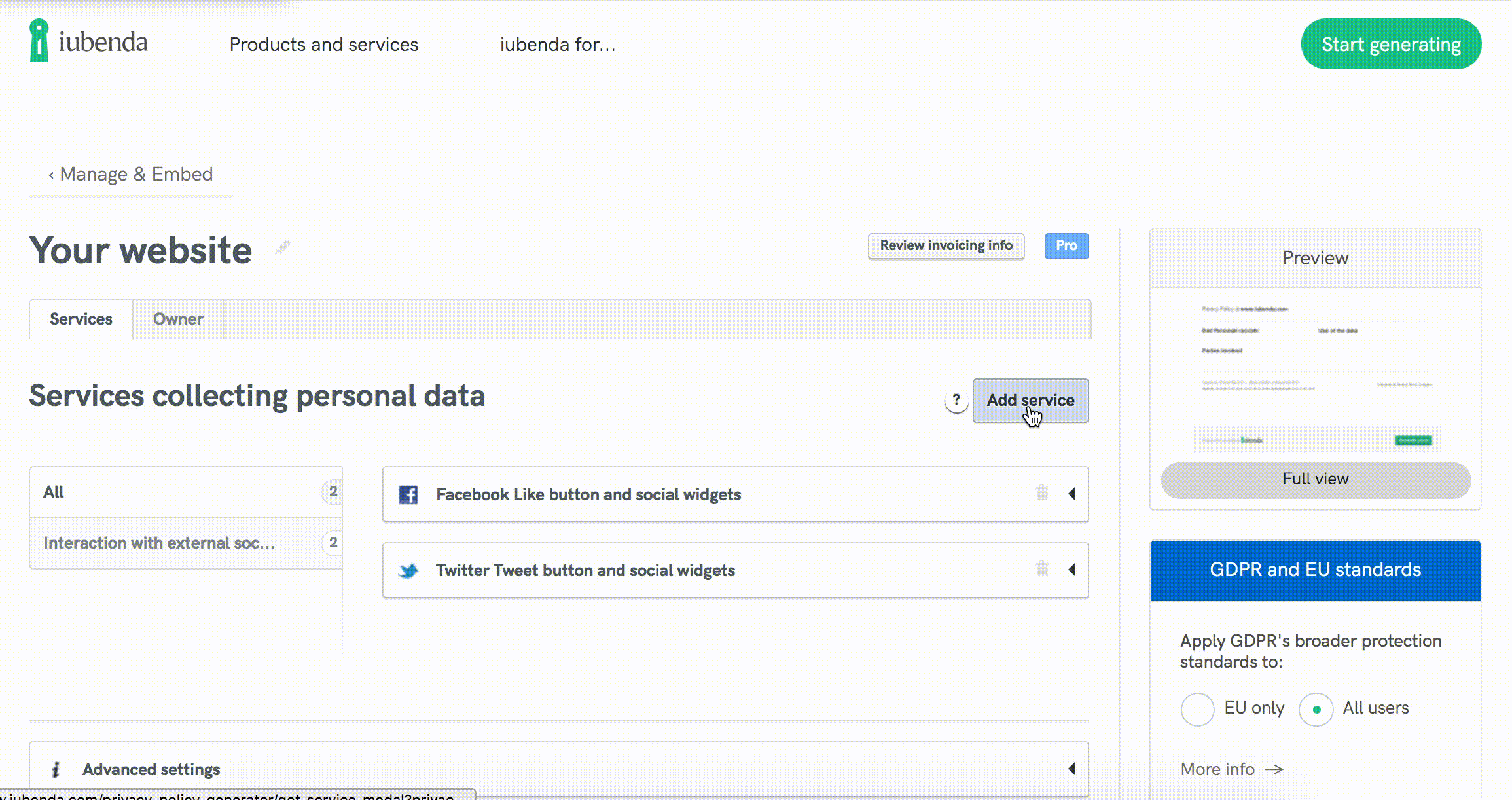You might have heard terms like “privacy notice” and “privacy policy” thrown around, especially when visiting websites or signing up for services online. But what do these terms mean, and is there a difference between a privacy policy vs privacy notice? This guide aims to clear up the confusion and explain everything you need to know about privacy notices and privacy policies.

A privacy notice is a document that businesses provide to explain how they collect, use, and protect your personal data. The General Data Protection Regulation (GDPR), a major privacy law in the European Union, emphasizes the importance of privacy notices. They must be written in clear, straightforward language that anyone can understand. According to GDPR guidelines, a privacy notice should be easily accessible, often found on a website’s privacy policy page. It’s designed to be transparent about data processing activities to users and the public.
The term “privacy policy” is often used interchangeably with “privacy notice.” Essentially, it serves the same purpose: to inform you about the organization’s data processing practices. A privacy policy outlines how your personal information is collected, used, and protected. It’s a fundamental aspect of an organization’s commitment to data protection principles.
In the context of GDPR and general privacy practices, “privacy notice” and “privacy policy” refer to the same concept. They are both public documents that describe an organization’s data processing activities. However, the term “privacy notice” is more commonly used in legal contexts or when referring specifically to the GDPR, while “privacy policy” is a more general term often found on websites.
Privacy notices play a crucial role in bridging the gap between organizations and the individuals whose data they handle, especially in the context of the European Union’s General Data Protection Regulation (GDPR). GDPR marks a significant move towards enhancing the control EU citizens and residents have over their personal data.
A well-crafted GDPR privacy notice is not just a legal necessity; it’s a cornerstone of transparency and trust. It empowers customers by providing them with clear, understandable information about what data is collected, how it’s used, who it’s shared with, and their rights concerning that data. This enables individuals to make informed decisions regarding their personal information.
Failing to adhere to GDPR’s stringent privacy requirements can lead to substantial penalties, including fines of up to 4% of an organization’s global revenue or €20 million, whichever is greater. This underscores the critical importance of compliance and the role privacy notices play in it.
A comprehensive privacy notice serves as a clear communication tool between your organization and the individuals whose data you collect and process. Here’s what you should include to make your privacy notice effective:
When your organization collects data directly from individuals, your privacy notice should include:
For data obtained indirectly, include all the above elements with these adjustments:
Additionally, per Article 14(3) of the GDPR, when obtaining personal data from a third party, you must inform the data subject with the privacy notice:
Your privacy notice, policy, or statement should be easily accessible:
Creating a privacy policy, notice, or statement can seem daunting, but there are several approaches to simplify the process:
Template services offer a variety of pre-designed templates for creating privacy policies, notices, and statements. These templates are crafted to meet basic data protection standards and can be customized to align with your organization’s specific data processing practices, although they may not meet all the necessary requirements.
Privacy Policy Generators provide an automated, interactive solution that crafts privacy documentation tailored to your organization’s specific needs. Users respond to questions about their data processing activities, and the tool generates a policy reflecting those details.
For organizations seeking customized solutions and legal robustness, consulting with a legal professional specializing in data protection and privacy law is invaluable. Legal experts can create personalized documents and provide strategic advice on compliance.
Regulatory entities often provide guidance, best practices, and resources to help organizations understand their obligations under laws like the GDPR. This information can serve as a foundation for your privacy documentation.
| Solution | Pros | Cons |
|---|---|---|
| Template Services |
|
|
| Privacy Policy Generators |
|
|
| Seeking Legal Assistance |
|
|
| Utilizing Regulatory Guidance |
|
|
While the terms privacy notice vs privacy policy may seem different, they refer to the same important document that outlines how an organization handles personal data.
Therefore, regardless of how we refer to them, ensuring that these documents are clear, accessible, and comprehensive not only complies with legal requirements like the GDPR but also builds trust with users.

Privacy notices can be categorized based on the timing and method of delivery:
A privacy notice document is a clear, concise statement that organizations provide to individuals, explaining how their personal data is collected, used, and protected. It outlines the purposes of data processing, the legal basis for processing, data storage periods, and individuals’ rights regarding their data.
A privacy policy is also commonly referred to as a privacy notice, privacy statement or data protection notice. These terms are used interchangeably to describe the document that communicates an organization’s practices around personal data processing.
A privacy notice should be given:
Providing privacy notices at these times ensures transparency and compliance with data protection regulations like GDPR, fostering trust between organizations and individuals.